
 Citizenship in the Nation
Merit Badge
Citizenship in the Nation
Merit Badge

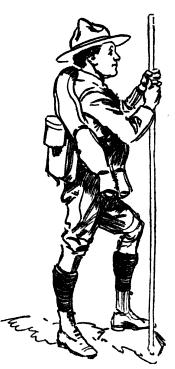
I am a merit badge counselor for Citizenship in the Nation Merit
Badge in the
Northern Star Council in Minnesota
and Western Wisconsin. I put this page together to help Scouts who
are working on the badge, either with me, or with another counselor. This page has two parts.
First, I have listed the requirements (current as of
October, 2017), and broken that down into two categories: The things the Scout should do, and the
things we will do at the counseling session.
Second, I have listed some helpful web pages and other
resources to help you prepare for this Merit Badge. While the information on this page is not presented "workbook" style, I think you'll find a lot of helpful information here. I strongly encourage you to read the
merit badge pamphlet. (This is the fastest way
to prepare.) But if you don’t have
access to the book, you can still get most of the information you need to
prepare from other sources.
How to Prepare for The First Merit Badge Session.
Citizenship in the Nation is not the easiest merit badge,
but it’s definitely not the hardest one. Any Scout will be able to earn it
with some preparation. In fact, if the
Scout is well prepared, this badge can usually be earned in one or two sessions
with the counselor.
To Be Prepared to do this, the Scout should complete all of
the requirements shown in the YELLOW column below prior to the merit badge
session. (These are my expectations, so
if you’re working with a different counselor, please check with him or her
first.) If a Scout does EVERYTHING in
the yellow column before the session, then he WILL finish the badge in a single
session. If he does MOST of the things
in the yellow column, then he will finish MOST of the requirements for the
badge, and either get a “partial” sign-off of his blue card, or else be able to
complete the merit badge at a second session.
The requirements
for Citizenship in the Nation can be found at scouting.org. These
requirements (current as of 2017) are shown below. But it’s a good
idea to check the latest edition of the Merit Badge Pamphlet of the official requirements online in case they
have recently changed.
|
Requirement
No.
|
Requirement
|
What
to do BEFOREyour
session with the counselor
|
What
you'll do with the counselor at the
merit badge session
|
|
1
|
Explain what citizenship in the
nation means and what it takes to be a good citizen of this country. Discuss
the rights, duties, and obligations of a responsible and active American
citizen.
|
Read pages 7-8 of the merit badge book and/or the resources
for requirement 1 shown below.
|
We will discuss this, and you will
explain what citizenship in the nation means.
|
|
2
|
Do TWO of the following:
|
You can pick any two of the
following requirements. Hint:
The easiest requirements are 2a and 2d.
|
We will do two of the following:
|
|
2a
|
Visit a place that is listed as a
National Historic
Landmark or that is on the
National Register of Historic Places. Tell your counselor what you learned
about the landmark or site and what you found nteresting
about it.
|
With your parents’ permission,
visit one of these historic sites and learn something interesting about
it. Optional: Take a “selfie”
of your visit. A list of historic
sites is listed in the resources for requirement 2a shown below.
|
You will tell what you learned
about this place and what was interesting about it.
|
|
2b
|
Tour your state capitol building
or the U.S. Capitol. Tell your
counselor what you learned about the capitol, its function, and its history.
|
With your parents' permission, take a tour of the
Minnesota State Capitol. Information
about tours is listed in the resources for requirement 2b shown below. If you recently
took a school field trip to the Capitol, this will qualify. But it must be this school year (or maybe last school year). That field trip from third grade doesn’t
count!
|
You will tell me and the rest of
the group what you learned.
|
|
2c
|
Tour a federal facility. Explain
to your counselor what
you saw there and what you learned
about its function
in the local community and how it serves this nation.
|
With your parent’s permission,
visit a federal facility. For ideas of
facilities, talk to your counselor.
|
You will tell me and the rest of
the group what you learned.
|
|
2d
|
Choose a national monument that
interests you. Using books, brochures, the Internet (with your parent’s permission),
and other resources, find out more about the monument. Tell your counselor
what you learned, and explain why the monument is important to this country’s
citizens.
|
Pick one of the national monuments
from the resources for requirement 2d shown below. You
do not need to actually visit.
Learn about why it is important.
|
You will tell me and the rest of
the group what you learned about the monument.
|
|
3
|
Watch the national evening news
five days in a row OR
read the front page of a major
daily newspaper five days
in a row. Discuss the national issues you learned about
with your counselor. Choose one of the issues and explain
how it affects you and your family.
|
Read the front page of a major
daily newspaper (Star-Tribune or Pioneer Press) for five days in a row. If
you use the online edition, see the note below.
OR: Watch the national
TV news five nights in a row.
Acceptable TV (and online) newscasts are listed below.
Think about the news stories and
how they affect you and your family.
|
You will tell me and the rest of
the group what you learned.
|
|
4
|
4. Discuss each of
the following documents with your
counselor. Tell how you feel life in the United
States might
be different without each one. Then choose one
document
and explain how it impacts you and your family.
a. Declaration of
Independence
b. Preamble to the
Constitution
c. The Constitution
d. Bill of Rights
e. Amendments to the
Constitution
|
Read pages 11-23 of the merit badge
pamphlet and/or the other resources listed below.
|
You will tell me and the rest of
the group what you learned.
|
|
5
|
List the six functions of
government as noted in the preamble to the Constitution. Discuss with your
counselor how these functions affect your family and local
community.
|
Read page 15 of the merit badge
pamphlet and/or the other resources listed below.
Make a list of the six functions.
|
We will discuss how these
documents are important.
|
|
6
|
With your
counselor’s approval, choose a speech of national historical importance. Find
out about the author, and tell your counselor about the person who gave the
speech. Explain the importance of the speech at
the time
it was given, and tell
how it applies to American citizens
today. Choose a sentence or two from the speech
that has
significant meaning to you, and tell your counselor
why.
|
The speech you use must be approved
by the counselor.
I
automatically pre-approve any of the speeches listed below. If you want to use a
different speech, that is good, but you need to get my approval first.
Read the speech and think about
why it was important when it was given and now.
Pick out one or two sentences that
you think are most important.
|
You will tell me and the rest of
the group about the speech.
|
|
7
|
Name the three
branches of our federal government and
explain to your counselor their functions. Explain
how
citizens can be involved in each branch. Explain the
importance
of our checks and balances system. Describe
how
each branch “checks” and “balances” the others.
|
Read pages 25-31 of the merit badge
book and/or the other resources listed below.
You need to memorize the names of the three branches:
-Legislative
-Executive
-Judicial
|
Everyone will name the three
branches, and we will discuss this.
|
|
8
|
Name your two senators and a
member of
Congress from your congressional
district. Write a
letter about a national issue and
send it to one of these
elected officials, sharing your view with him or her.
Show your letter to your
counselor, along with any response you might receive.
|
Learn the names of your two senators
and one member of congress.
Think about some issue that is
important to you, and think about what you want to tell one of them about
this issue.
If you want, you can start writing
your letter. If you do, bring this to
the merit badge session.
If
you get a reply before completing the merit badge, bring the reply to the merit badge session.
|
If your letter is ready, we will
send it. If it’s not quite ready, we’ll
work on it together.
We will also look at any replies
that were received.
|
Suggestions and Sources of Information
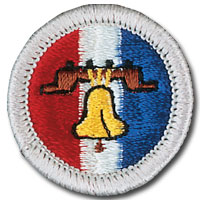
To earn this merit badge, you will need to do some reading and research. The best and easiest source of information for most of the requirements is the merit badge book. However, all of the information is also available from other sources, and some of those sources are listed below. In addition, because some of the requirements ask you to find local information, I have included the local information for the St. Paul, Minnesota, area below.
Note: Links on this page are to external sites. These links were accurate and appropriate when added, but are not
under my control. Get your parent's approval before visiting any of these sites.
Requirement 1: What Citizenship in the Nation Means
There is no one "right" answer to this question, but pages 7-8 of the merit badge book give some ideas for your answer. The following links might also give you some ideas:
Requirement 2: Historic Places
Requirement 2 requires you to pick two different kinds of historic places, and there are four different kinds you can pick from. For three of them, you need to go visit in person. For the fourth kind, you can just learn about it without visiting. For that reason, most scouts will one to pick one from that category (2d-national monuments).
For the ones you have to visit in person, 2a (historic sites) is the easiest to find a site close by.
Therefore, most scouts will probably want to pick requirements 2a and 2d. However, if you want to pick 2b and/or 2c instead, that is also good.
Requirement 2a: Historic Sites
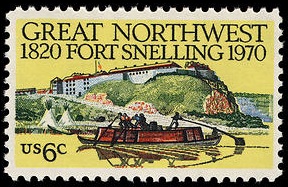
For this requirement, you need to visit a place that is listed on the National Register of Historic Places. There are thousands of places on this list. In fact, there are 112 in Ramsey County, and you can find them on
this Wikipedia listing. As you look through this list, you will see many familiar landmarks.
Not all of these places are open to the public, but many are outdoor sites that don't require any particular permission to visit. Many, such as the
Como Park Conservatory and the St. Anthony Park Branch of the St. Paul Library are free and open to the public. Some, like the Robert Street Bridge in Downtown St. Paul, you can simply walk over.
There are also many in
Hennepin County, including Historic Fort Snelling.
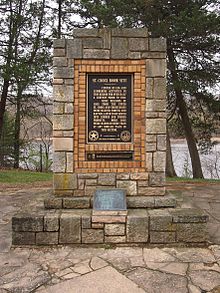
You can also pick a National Historic Landmark. This list is not as long, but you can find the Landmarks in Minnesota at this
Wikipedia listing. One very interesting local landmark is the
St. Croix Boomsite on the St. Croix River just north of Stillwater.
If you look through these lists, you will find many sites that you can easily visit with your family. By following the Wikipedia links, you can find out all of the information you need to meet the requirement.
Requirement 2b: State Capitol
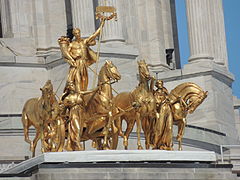
If you recently took a tour of the Minnesota State Capitol, then this counts for requirement 2b. Some scouts might have taken a school field trip recently, and they can use this to satisfy requirement 2b. But sorry, no, you can't use the field trip you took back in second grade!
If you do want to take a tour of the Minnesota State Capitol, there is a free guided tour 7 days a week. The tour lasts 45 minutes. You need to show up between 10:00 AM and 2:00 PM, Monday through Saturday, or 1:00 PM to 3:00 PM Sunday. Go in the main entrance and go to room 126 on the first floor.
You can find full information at the
State Capitol Website. Many bus routes and Green Line light rail go to the capitol. You can find information at the
Metro Transit website.
Requirement 2c: U.S. Government Facilities

There are hundreds of federal facilities--buildings owned by the U.S. Government--in the Twin Cities. Many are closed to the public, but others are open to tours. If you want to visit some kind of government installation, talk to your counselor.
If you try to visit
Area 51, they'll probably kick you out. But if you go to the Mississippi River Visitor Center, they'll be happy to show you around.
For a sampling of U.S. Government facilities in the Twin Cities, see online listings such as
this one.
Requirement 2d: National Monuments
This is the easiest way to take care of one of your two "historic places" requirements, because for a National Monument, you don't need to actually visit the monument. You need to learn about it, but you don't need to go there. Fortunately, all of the national monuments have excellent websites, and you can learn all you need to know online.
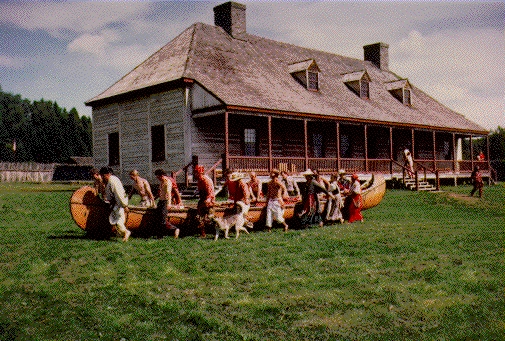
There are only two National Monuments in Minnesota: Grand Portage National Monument on Lake Superior, and Pipestone National Monument in Southwestern Minnesota. These are both extremely interesting locations, and you should plan on visiting them sometime. (And if you have a younger brother or sister who is in fourth grade, you should start being nice to them, because they can get a
free pass to visit these sites and hundreds of other National Park Service locations.)
But you do not need to actually visit the National Monument for requirement 2d. Therefore, you can pick any one you want. You can find the
list of National Monuments at Wikipedia. Pick out one that looks interesting, click on its name from the list, and you will be taken to the Wikipedia page for that monument. On that page, find the link for the site's official website, and you will find all of the information you need. Here's a list of some National Monuments that you might find particularly interesting:
- Agate Fossil Beds. This large deposit of fossils is located in Nebraska.
- Aztec Ruins. These ancient ruins of the Pueblo people of New Mexico date back 900 years.
- Cabrillo. The first European to set foot on the west coast of the U.S. landed at this spot in California in 1542.
- Devils Postpile. These eerie basalt columns tower over 60 feet in California.
- Devils Tower. Made famous in the movie Close Encounters, this stone structure rises hundreds of feet.
- Effigy Mounds. These ancient mounds in Iowa are considered sacred by many Native Americans.
- Fort McHenry. An 1814 battle at this Maryland fort inspired Francis Scott Key to write the National Anthem.
- George Washington Carver. This Missouri site was the boyhood home of the agricultural scientist, educator, and humanitarian.
- Giant Sequoia. The trees at this California monument tower over 300 feet.
- Homestead. This Nebraska farm was the first spot settled under the 1862 Homestead Act.
- Marianas Trench Marine. The U.S. Fish and Wildlife Service administers this marine national monument, which includes the world's deepest spot in the ocean,
- Statue of Liberty. The famous statue in New York Harbor is administered by the National Park Service.
- Waco Mammoth. This fossilized herd of mammoth is located in Waco, Texas.
- World War II Valor in the Pacific. This war memorial has sites in California, Alaska, and Hawaii, and includes the U.S.S. Arizona memorial in Pearl Harbor.
Requirement 3: Newspapers or TV News
Newspapers
To meet this requirement, you need to read the front page of the newspaper five days in a row. This must be a major daily newspaper such as the
Star-Tribune or the
Pioneer Press. If you prefer, it can be an out-of-town paper such as the
New York Times or
Chicago Tribune.
Most newspapers have all of their content online, so you can meet this requirement by reading the newspaper's website. However, you want to make sure that you read all of the stories that are on the newspaper's front page.
Most newspapers will have about five major stories on their front page. Therefore, you can meet this requirement online by reading the top five national articles on the website every day for five days. You will need to read a total of 25 articles.
TV News
You can also meet this requirement by watching the national newscast for five days on a TV network. Here are the times these newscasts are aired:
- CBS: Channel 4, 5:30 PM
- NBC: Channel 11, 5:30 PM
- ABC: Channel 5, 5:30 PM
- CNN: Various Times
- Fox: Various Times
If you miss the newscasts at these times, you can also watch them played back online at these links:
To meet this requirement, just pick a network, and watch the newscast for five days. If you miss one broadcast, then watch it online later that day. (The cable news channels generally don't have their full newscasts repeated online. However, you can tune in to a later newscast the same day.)
Requirement 4: Historic Documents
The best source of information is pages 11-23 of the merit badge book. In addition, you can find the information at these Wikipedia links:
Requirement 5: Six Functions of Government
The best source of information is page 15 of the merit badge book. In addition, you can find the information at the following links:
Requirement 6: Historic Speeches
The speech you pick must be approved by the counselor. I have pre-approved the following speeches. By clicking on these links, you can read or hear the speech and more information about it:
Requirement 7: Three Branches/Checks and Balances
The best source of information is pages 25-31 of the merit badge book. In addition, you can find the information at these links:
Requirement 8: Members of Congress and Senate
Every state has two Senators. Every person has one Member of Congress, depending on where they live.
If you live in Minnesota, then your two Senators are:
If you live in Ramsey County, then your Member of Congress is Betty McCollum.
If you live somewhere else, you can look up the names of your Senators and Member of Congress by entering your address at this website.
For information on writing your letter, see page 41 of the merit badge book. This article also provides good advice on writing to elected officials.
Please visit my blog, OneTubeRadio.com for more
posts about Scouting and Scouting history.
Advertisement:
Copyright 2017, Richard P. Clem
clem.law@usa.net
Return to my main page
Copyright and privacy policy

 Citizenship in the Nation
Merit Badge
Citizenship in the Nation
Merit Badge








